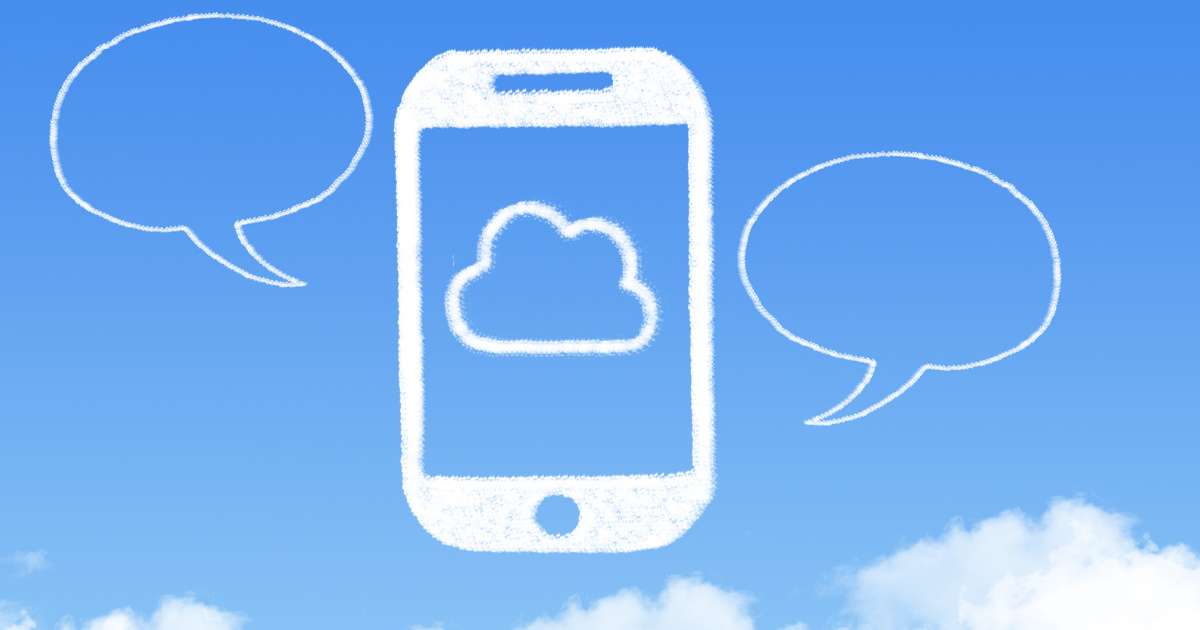When our lives become increasingly busy and we can’t stay put in one place all the time, it’s hard to keep track of calls – especially the incoming ones. A missed call is never great news, but with modern technology, we now have the ability to stay on top of those missed calls with a custom-made automatic response. That’s right, no more worrying about the missed calls with no response. You can now automatically reply to those missed calls with a custom text message! Here, we will discuss the advantages of automatically replying to a missed call and how you can set up an automatic response for your phone.
Post Contents
ToggleQuick Summary of Key Question
You can set up an automatic text reply to a missed call by using your phone’s built-in settings or by downloading a third-party app. Generally speaking, both options require you to designate a personalised response to be texted out when someone calls and you do not pick up the phone.
What is an Automatic Text Reply to Missed Call?
An Automatic Text Reply to a Missed Call is a feature of many modern smartphones and other mobile devices. It allows users to respond to incoming calls they have missed with a custom pre-set text message. These messages can be automatically sent after the desired number of rings has been made. This gives users more control over how they respond when they are not able to answer an incoming call right away.
The use of Automatic Text Replies can be beneficial in some situations, allowing users to quickly provide the caller with information without having to pick up their phone. This can include information about why the call was missed or simply send a polite response informing the caller that you are unable to answer at the time. In certain scenarios, this feature could potentially reduce frustration on both ends, as it prevents users from worrying about missing an important call and allows them to choose when and how to respond regardless of their availability.
On the other hand, this feature can also lead to increased stress among users who feel pressured to respond quickly after an incoming call. Furthermore, an automatic text reply can also be seen as overly impersonal and create unwanted distance between two people in long-distance relationships or conversations between co-workers in business settings.
In any case, Automatic Text Replies are a useful tool for those looking for more control over how they communicate with others when unable to answer their phones immediately. By understanding both the benefits and potential drawbacks of this feature, it is possible to decide whether or not it is right for one’s individual needs. This leads us into the next section which discusses the Benefits of Automatic Text Reply Systems.
- According to a 2016 survey, 65% of consumers expect a response to their text message within one hour.
- A 2017 study found that automated texting campaigns are three times more effective than email marketing campaigns and result in 4-8 times higher response rates.
- Research has shown that nearly 85% of people prefer receiving marketing messages through text messaging over other methods such as calls and emails.

Benefits of Automatic Text Reply Systems
The widespread implementation of automatic text reply systems has provided a variety of benefits for businesses that take advantage of the technology. For instance, automated replies can help companies save time and money by streamlining how they answer incoming calls. Automatic texting eliminates the need to hire staff specifically to handle basic customer inquiries, reducing overhead costs related to labour. Additionally, when set up properly, automated responses can provide customers with timely, relevant messages when requested information is not immediately available from the customer service representatives on call. Customers appreciate being notified quickly that their inquiry will be answered as soon as an agent is free to do so.
Moreover, automated text reply systems have greatly reduced the amount of miscommunication between customers and agents. Since these systems are programmed to follow a strict set of instructions, all customer inquiries are addressed in a consistent manner, ensuring that messages sent out by the company adhere to its policy across all channels. Furthermore, automated text messages include detailed instructions and resources such as phone numbers or website links that prompt customers to act quickly in order to resolve their issue faster. This helps empower both the business and customer alike by eliminating misunderstandings while also providing more control over when clients receive a response from the company.
While there are certainly many advantages offered by automated text reply systems, it’s important to note the potential drawbacks as well. If the system is not updated regularly or configured correctly, agents may end up missing important inquiries because they were overlooked in favour of automatically sent out responses. Additionally, customers may become frustrated if they receive messages that do not address their individual problems or don’t provide them with enough options for how to proceed with their issues at hand. For these reasons, businesses should always review any issues associated with automatic textreply systems in order to continually refine their customer service process and ensure optimal results for both customers and personnel alike.
With this in mind, it becomes clear why utilising an automatic text reply system can create faster customer service response times and improve overall customer satisfaction levels with minimal effort from both employees and management alike. In the next section we’ll discuss in more detail how quicker response times can benefit businesses by improving client relations and enhancing customer loyalty levels.

Key Summary Points
Automatic text reply systems have many advantages, such as reducing costs related to hiring staff and streamlining customer service inquiries. They can reduce miscommunication between customers and agents, provide timely and relevant messages, and eliminate misunderstandings by adhering to a set of instructions. However, if not set up properly there can be potential drawbacks, such as missing important inquiries or frustrating customers with irrelevant messages. Overall, utilising automatic text reply systems can create faster customer service response times and improve overall customer satisfaction.
Faster Customer Service Response Times
One of the major benefits of using an automated response system to missed calls is that customer service teams are able to provide faster response times. By taking some of the manual labour out of the equation and having a message go out immediately after a call is missed, businesses can give their customers an assurance that someone will return their call just as quickly as possible. This helps ensure that customers do not feel forgotten or ignored and that their inquiries are handled in a timely manner for maximum satisfaction.
For organisations offering customer service, having an automated response system gives them an edge over competitors who may not use one. Automation eliminates guesswork when it comes to following up with incoming calls – customers can be confident that any inquiry they make will be answered as soon as possible, leading to better customer service overall. On the flip side, manually responding to every missed call requires more resources and could potentially result in slower response times if all customer service representatives are busy.
By advocating for faster customer service response times, businesses can also improve their brand image and increase customer trust by showing they’re reliable and dedicated to promptly responding to customers’ calls. Thus, choosing to use an automated response system allows organisations to tailor made responses on time, foster better engagement with customers, demonstrate their commitment to providing quality customer service, and potentially increase their revenue due to improved customer experience.
Leading into the next section about increased customer service satisfaction, automated responses have been shown to convert into long-term success due to faster response times, enhancing convenience for customers and establishing trust with businesses.
Increased Customer Service Satisfaction
Increased customer service satisfaction is a huge benefit to implementing an automatic text reply system. Over the years, consumer surveys have consistently shown that customers want prompt responses to their inquiries. Of course, having staff manually respond to missed calls can be difficult and often inefficient when dealing with a high volume of incoming calls. An automatic text reply system is one way to provide timely responses no matter the number of incoming queries.
When customers receive an automated response that acknowledges receipt of their call and provides them with additional information such as alternative contact methods or even a projected time for when they should expect a response from a customer service representative, this eliminates potential frustration and shows that their inquiry is being taken seriously. Furthermore, having an automated response system in place helps customers receive the answers they need faster and keeps them better updated on the status of their case or inquiry. When provided with such promptness and assurance of attention to their needs, customers are more likely to remain loyal and feel satisfied with their overall experience.
On the other hand, automation can also eliminate the personal touch that traditional customer interactions can provide. This automatisation might disappoint some customers who may want a more human-to-human connexion with customer service staff regardless of the efficiency advantages it offers. Additionally, some customers may express privacy concerns if they are asked to leave detailed messages on an automated system. There’s also the possibility of technical glitches or disruption to voice mail services which can make these systems unreliable at times compared to traditional customer service channels.
Overall, while there could be some drawbacks associated with using automated systems for customer service requests, setting up an automatic text reply system has great potential for improved customer satisfaction due to its ability to provide timely responses when needed most regardless of the number of inquiries coming in. With this in mind, let’s explore how companies can implement such a system into their existing customer service structure.
Implementing an automatic text reply system requires careful consideration across numerous departments such as software development and even marketing depending on the organisations specific goals for this initiative.

Implementing an Automatic Text Reply System
Implementing an Automatic Text Reply System is not as difficult as one may think. By using an automated system, businesses can ensure that customers are receiving timely responses when they have questions or concerns. Setting up such a system requires careful planning and consideration to establish the best approach for providing timely text replies to customers.
There are numerous types of technologies available to help with implementing an automated text reply system. Some of these include utilising cloud-based services, software tools, APIs and other custom solutions. Choosing which technology to implement should be based on the type of customer service interactions you’re expecting to receive. Cloud-based services can offer some attractive features such as scalability, flexibility and security. Software tools may provide more control over your system’s configuration but may require higher upfront costs. APIs and custom solutions might offer comprehensive services tailored specifically for your business.
Customers may expect personalised responses in a timely manner when they contact your business and using an automated system could impact their overall impression of your brand. On the other hand, if set up properly, an automated text reply system could help streamline customer interactions, reduce costs and ensure that inquiries are handled quickly and efficiently. It is essential to weigh all of the potential outcomes before deciding which methods to use for implementing your new system.
To set up a successful automated text reply system, it is critical to consider what works best for your organization’s particular needs and objectives. Configuring the right parameters could mean the difference between success and failure in this endeavour. The next section will discuss ways of setting up the necessary system configuration to achieve maximum benefit from this feature.
Setting Up System Configuration
When it comes to setting up the system configuration of automatically replying with a custom text message, there are both pros and cons. On the one hand, allowing users to customise their automatic replies gives them more control over who they can reach with the message and how they want to word it. This increased control can help users save time and focus on more important tasks. On the other hand, customization may require more technical knowledge which would create an exclusionary barrier that could be difficult to navigate.
More advanced systems may also offer additional configuration settings like scheduling times at which the system will auto-reply as well as how many times a user should receive a repeat message before an alternate action is taken. These features would enable better flexibility in using automated text reply systems but may come at the expense of added complexity and price.
Regardless of what type of system configuration you choose, it is important to carefully consider the best option for your needs and resources. From there, you will be able to identify what features you need and make sure that those features are part of your system setup. Now that we have explored setting up system configurations, let’s move on to discussing types of automated text reply systems available on the market today.
Types of Automated Text Reply Systems
The types of automated text reply systems are varied, and can be tailored to suit almost any context. There are two primary types: a direct automated response to missed calls, and an automated response triggered by a certain set of criteria.
The first type is the direct automated response; upon receiving a missed call, a custom message will automatically be sent back to the caller. This can be useful for businesses that want their customers to know that they’ve been contacted, even if the representative cannot pick up the phone at that time. It also reduces the amount of time needed to manually respond to each call, as the system can take care of it automatically.
The second type is an automated response triggered by certain criteria. For example, if a customer calls after hours or during lunchtime, an automated message could be sent informing them of the current operating times. Additionally, when customers receive an automated message back after missing a call, they may feel taken care of and heard.
Debate: On one hand, some people argue these systems can make customers feel robotic and unappreciated since they don’t get direct contact with the company or person they are trying to reach. On the other hand, proponents maintain that these systems let customers know that their calls were received and responded to quickly and accurately without requiring any manual labour from representatives.
Overall, automated text reply systems can help companies save time and resources while still providing customers with timely responses. Moving forward, it is important for companies to consider how best to optimise these systems in order to ensure customer satisfaction.
Bringing this discussion into its natural conclusion, it is now necessary to look at alternatives to automated text reply systems.

Alternatives to Automated Text Reply Systems
The use of automated text reply systems to missed calls can be an efficient way to stay in contact with customers and to keep in touch with business contacts without having to manually respond to each call. But, these automated text reply systems are not the only option available when it comes to responding to missed calls. There are also some alternatives that may be more suitable for particular individuals or businesses.
For example, a person may prefer to use a call waiting system so that their phone will answer a call if they miss it and record the caller’s message. This way, they can listen back at a later time and decide whether they need to address the message with a call back or not. This can be ideal for someone who works remotely or is often travelling and away from their phone. It also keeps conversations private since any messages left will only be heard by the recipient, not anyone responding through an automated text message system.
In addition, some companies may find success in using voice message services such as voicemail or voicemail-to-text services where customers can leave recorded messages on an answering machine which are then sent via email or text notification for easy access and review later on. This type of system allows for quick responses as needed but also allows for more personal interactions than automated messaging systems.
Finally, companies may prefer to provide a customer service line that provides more direct contact with representatives who can answer questions by phone or live chat support instead of relying on an automated system. This type of customer service experience is particularly beneficial for those who require more personalised attention beyond what automatic messaging systems can provide.
Overall, whether it is a voice message system, call waiting system, customer service line or automated messaging– depending on the individual circumstance there are many options available when it comes to responding to missed calls efficiently and effectively.
Conclusion and Overall Review: As we discuss in this article, there are multiple alternatives available to those seeking an efficient way to respond to missed calls beyond using just automated text reply systems. In our next section of this article we will conclude by giving an overall review of all options discussed in order to help consumers decide which response method works best for them based on their own unique needs and preferences.
Conclusion and Overall Review
Automatically replying to missed calls with a custom text message is an efficient way to save time and let the caller know that you received their call. It can be tailored to the individual, depending on the type of relationship they have with the recipient. Automatically sending out a personalised message can help to create stronger relationships between people and increase customer loyalty. The immediate response makes it easier for customers to understand why their call wasn’t answered and encourages them to stay in contact.
On the other hand, these automated messages can come across as impersonal, which could potentially put off some customers or clients. While these messages may save time for the recipient, for customers who aren’t used to automated text messages, it could make them feel like the recipient isn’t taking the time to respond personally.
Overall, automatically replying to missed calls with a custom text message is an efficient way to streamline communication while still being respectful of everyone’s time. However, it should be used judiciously so as not to damage relationships with customers. If done right, automatically responding to missed calls can foster meaningful relationships and increase customer loyalty.

Frequently Asked Questions
How can I customise an automatic text reply to a missed call?
You can customise an automatic text reply to a missed call by using your phone’s voicemail or text messaging apps. Most smartphones come with built-in voicemail options that allow you to record a custom outgoing message and have it sent out in response to a missed call. Text messaging apps like Go SMS Pro, or Textra also offer features specifically designed for automatically responding to incoming messages, allowing you to customise text replies based off of the content of the received messages. In some cases, you may even be able to set up automated notification systems that send texts in response to certain words or phrases included in incoming messages.
What kind of technology do I need to set up an automatic text reply to a missed call?
In order to set up an automatic text reply to a missed call, you will need access to a mobile device with features that enable automated responses. Specifically, you will need a smartphone that is running either iOS or Android and has the ability to set up custom text-based automated responses. You may also need a third-party app or software service depending on your particular device’s capabilities.
Depending on the type of phone and what level of automation you desire for your response, the exact steps may differ slightly; however, most phones allow for some basic configuration which enables users to create a default message that will be sent out as an SMS whenever they miss a call. This feature can typically be found within the phone’s main settings menu if it is available.
Once you have enabled this feature and created your customised message, all incoming calls that are not answered will automatically trigger your predefined SMS response. With this technology, you no longer have to worry about missing important calls while away from your phone—they will simply be greeted by your personalised text message.
What are the benefits of having an automatic text reply to a missed call?
The main benefit of having an automatic text reply to a missed call is that it saves time and hassle. By automatically sending a message when someone misses your call, you don’t have to worry about manually checking and then responding to each individual caller. It also allows you to customise the message based on who is calling and the reason for their call. This can be very helpful in conveying any important details or instructions quickly. Additionally, you don’t need to personally respond each time someone misses your call, so it can save you a lot of time.
On top of that, an automatic text reply also provides convenience and improved customer service. Many businesses use this option as a way of providing prompt responses to customers’ questions or messages – even if they miss the call or are unable to answer right away. This helps ensure that customers feel heard and valued in the communication process.
Overall, an automatic text reply can be a great tool for saving time, improving convenience, and providing customers with better service.





